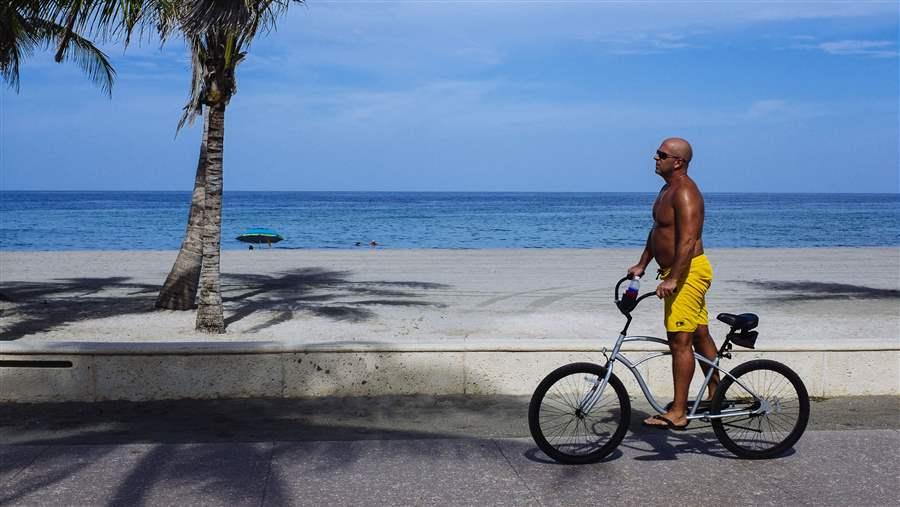By MARSHA MERCER
Democratic presidential contender Martin O’Malley soon
may be a footnote in history, but he made news the other day by simply showing
up.
Braving a blizzard, O’Malley made it to Tama, Iowa,
population 2,877, and found exactly one voter waiting for him.
“The very last event of the night, we actually had a
whopping total of one person show up, but by God, he was glad to see me. So we
spent the time with him,” O’Malley told MSNBC’s “Morning Joe” Tuesday.
O’Malley sat and talked with the man, identified
only as Kenneth, about Syrian refugees, prison reform and other issues. In the
end, though, Kenneth remained undecided. He needs to see some other candidates
before making up his mind.
Of course he does. Iowa and New Hampshire voters expect
to see the whites of presidential candidates’ eyes while voters elsewhere rarely
catch a glimpse a contender in the flesh.
As the election year begins, candidates and the news
media are focused on the first four contests – Iowa caucuses Feb. 1, New
Hampshire primary Feb. 9, and South Carolina’s Republican primary and Nevada’s
Democratic caucuses Feb. 20.
This year, though, another date looms large -- March
1. That’s Super Tuesday, when a dozen states hold presidential primaries or
caucuses, the most on a single day. They are: Alabama, Alaska, Arkansas,
Colorado, Georgia, Massachusetts, Minnesota, Oklahoma, Tennessee, Texas,
Vermont and Virginia.
Some have dubbed March 1
the “SEC primary” after the Southeastern Conference in college sports.
After the first Super Tuesday in 1988, former
Virginia Gov. Chuck Robb, an architect of Super Tuesday, said it was intended
to “reduce the influence of the so-called Iowa syndrome” and nationalize the
political message. Southern Democrats also hoped it would give the region more clout.
It hasn’t worked out that way, but in 2016 Super
Tuesday may live up to its potential. It could do what Iowa and New Hampshire
likely won’t do – winnow the crowded Republican field.
Super Tuesday states are getting more attention than
usual. Ted Cruz took a bus tour of the South last summer and blitzed a dozen
cities in a week in December. Marco Rubio stumped in Georgia and announced
dozens of endorsements in Virginia. He plans a rally in Texas Jan. 6.
Donald Trump drew a huge crowd to a rally in Mobile,
Ala., in August. Just how many attended was in
dispute – he claimed 31,000 while some media outlets estimated about 20,000.
Determined to be ignored no more, Alabama Secretary
of State John H. Merrill, a Republican, says he will promote visits by
candidates of both parties, although deep red Alabama draws more Republican contenders.
Trump conceded the other day that he might not win
Iowa. He was looking ahead to Super Tuesday when he lambasted Virginia
Republicans for requiring a party loyalty pledge to vote in the primary. The
pledge -- “My signature below indicates that I am a Republican” -- could turn
off independents and Democrats who might be Trump voters.
“Suicidal mistake,” Trump tweeted.
If Super Tuesday delivers a Republican candidate
that appeals broadly, it could finally weaken Iowa’s parochial influence.
Iowa’s record picking nominees is dismal. Rick
Santorum won the Republican caucuses in 2012 and Mike Huckabee won in 2008. After
Lindsey Graham of South Carolina dropped his presidential bid the other day,
Iowa Gov. Terry Branstad said Graham told him he had learned two things about
Iowa: “You need to love Jesus and ethanol.”
Mitt Romney and John McCain won the New Hampshire
primary in 2012 and 2008, respectively, and both became the party’s
presidential nominees.
In the 2008 Democratic contests, Barack Obama won in
Iowa – and Hillary Clinton came in third, behind John Edwards. She won the New
Hampshire primary that year.
The hard truth is that most presidential candidates
end up as also-rans. If they’re lucky, they may be remembered for a good line. Mo
Udall was a Democratic congressman from Arizona when he ran for president in
1976. He finished second in six primaries the year Jimmy Carter rode his win in
the Iowa caucuses to victory.
Udall often
told a story about meeting some elderly fellows in a barber shop in New
Hampshire, where he said, “I’m Mo Udall, and I’m running for president of the
United States.”
“Yeah,” the barber replied, “We were just laughing
about that this morning.”
©2015 Marsha Mercer. All rights reserved. 30
.

